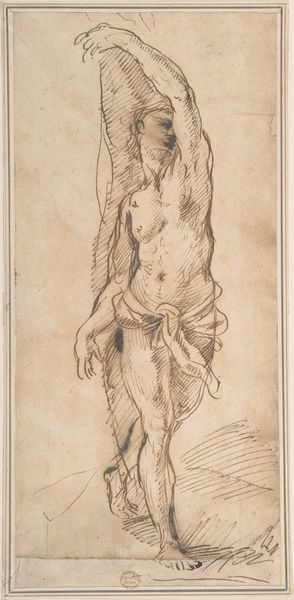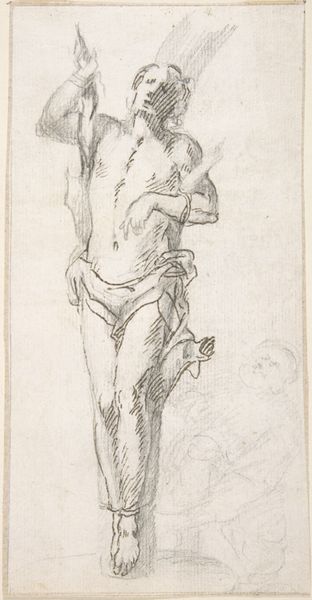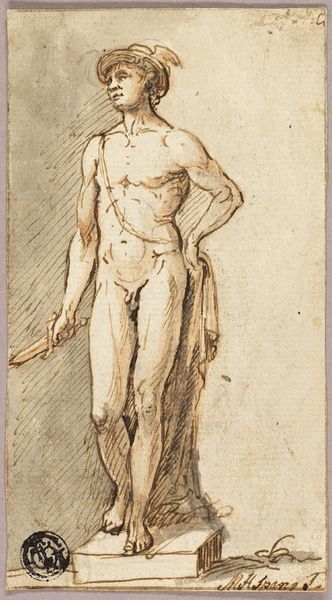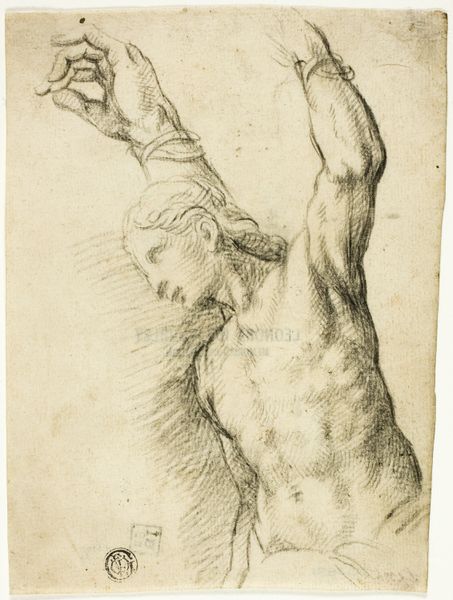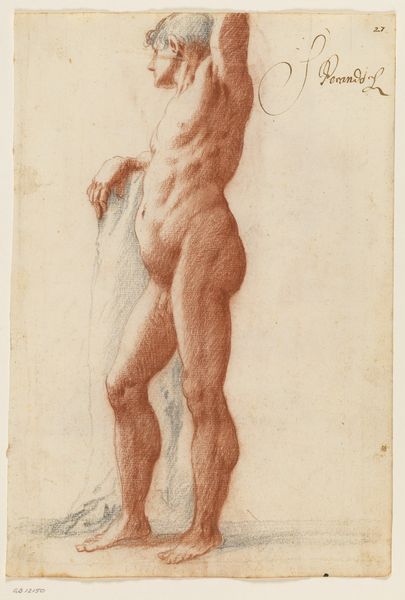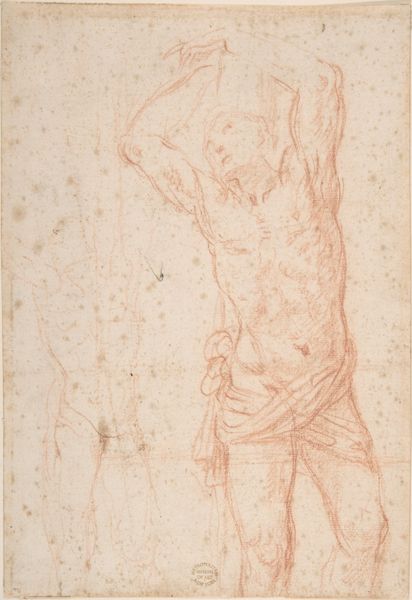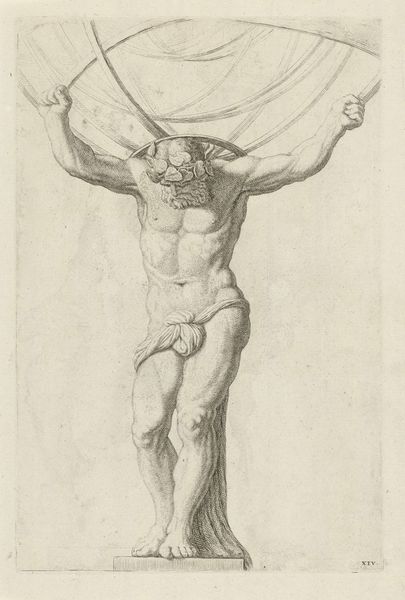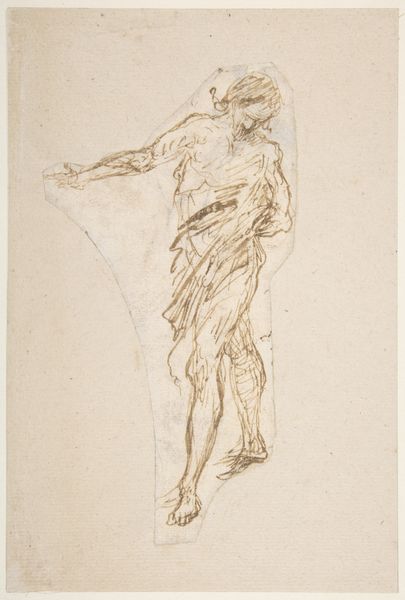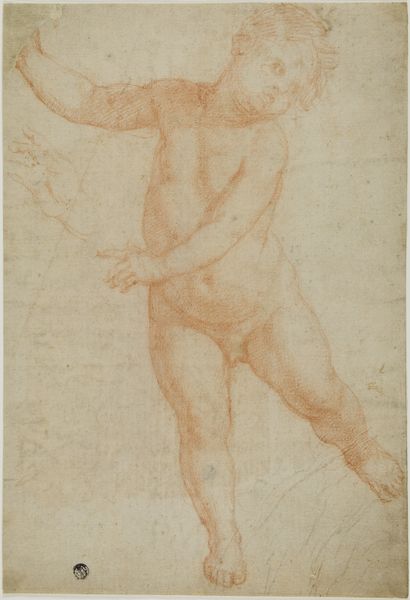
drawing, print
#
pencil drawn
#
tree
#
drawing
#
amateur sketch
#
toned paper
#
light pencil work
# print
#
pencil sketch
#
charcoal drawing
#
pencil drawing
#
portrait drawing
#
pencil work
#
watercolor
Dimensions: 9 x 5-3/4 in. (22.8 x 14.6 cm)
Copyright: Public Domain
Editor: So, here we have "Saint Sebastian (?) Tied to a Tree," a drawing done between 1695 and 1705 by Pedro Duque Cornejo. It looks like pencil on toned paper. There’s a real sense of movement in what feels like a preparatory sketch. What's striking to you about it? Curator: The apparent casualness, the "sketchiness," is precisely where the labor is obscured. We see 'pencil work', but what kind of pencil? The source and production process of the 'toned paper' is also interesting. Was it made specifically for drawing? How would it have been bought, sold, and priced within the market of the time? This focus allows us to consider the networks of production and the socioeconomic forces. Editor: I never thought about paper having a history, but that makes a lot of sense. So, instead of just focusing on Saint Sebastian himself, we can think about where the materials came from to create the image. Curator: Precisely. Think about the skill involved in preparing the materials – grinding pigments for the pencil "lead", the treatment of paper to achieve that specific tone. These were specialized forms of labor, often unacknowledged. Are those suggestive watercolor washes part of the work? Editor: That’s a good point; they almost feel like stains. How does that change how you see it? Curator: Well, are the "stains" evidence of a functional drawing, used and reused in the artist's workshop, part of the everyday, material business of art-making? Or later embellishments attempting to create the sense of authenticity and age that attracts modern buyers and museums? That uncertainty speaks to art’s constant relationship with commerce and valuation. Editor: So even the accidental aspects, the so-called flaws, can tell us something about its life. This focus on the physical making of art is really opening my eyes. Curator: Exactly. It reframes our understanding. Instead of just the final image, we explore the conditions and processes that made that image possible, the material reality of its creation and consumption. Editor: It gives me a whole new perspective on art history. Thanks!
Comments
No comments
Be the first to comment and join the conversation on the ultimate creative platform.
